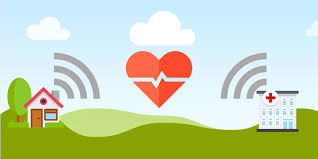 Sensor technology is increasingly useful in the care of older adults. As part of the research into the Future of Sensors and Older Adults, interviewees outlined ways sensors could be useful for mitigating fall risk. And their role tracking trips to the bathroom has been useful in detecting UTIs, identifying wanderers, alerting about sleep issues, noting whether a person has eaten. In senior living or home care, permission to track this type of information is likely (hopefully) given at the onboarding of a new care recipient or resident. By mitigating some of these issues, older adults could remain home longer, supported by home care. Or they could extend time in a senior living home, prior to moving to a higher level of care.
Sensor technology is increasingly useful in the care of older adults. As part of the research into the Future of Sensors and Older Adults, interviewees outlined ways sensors could be useful for mitigating fall risk. And their role tracking trips to the bathroom has been useful in detecting UTIs, identifying wanderers, alerting about sleep issues, noting whether a person has eaten. In senior living or home care, permission to track this type of information is likely (hopefully) given at the onboarding of a new care recipient or resident. By mitigating some of these issues, older adults could remain home longer, supported by home care. Or they could extend time in a senior living home, prior to moving to a higher level of care.
The crisis of care staffing – there isn’t enough. Sixty-one percent of nursing homes have limited admissions due to staff shortages. Some worry the industry cannot recover. Since January of 2020, 400,000 nursing home and assisted living workers have quit. The shortage is keeping people in the hospital for longer than their health status warrants. And the shortage of home care aides is only going to worsen over the next decade. In fact, family caregivers may be increasingly likely be paid for the care they provide.
Can sensors also have an impact on staffing challenges? You know the long hall – it’s where the hospital room or apartment of your family member was situated – all the way at the end. Never mind that the location was isolating for the resident or patient. Consider the staff daily and nightly workload of check-in walks, nearby and all the way to the end. Now think about appropriately placed sensor technologies -- motion sensors, radio waves, localized AI cameras, near or on-body movement detection technologies. All are designed to monitor activity or its absence. Mrs. Smith is asleep and comfortable; Mr. Jones is pacing around the room and tries to get outside. Veterans and nursing home residents in wheelchairs need assistance in repositioning.
Noting condition and movement can enable targeted staff intervention. The combination of monitoring and precisely targeted intervention, especially at night, could optimize staff workload – alerting and sending them where help is needed, instead of traditional long-hall check-ins involving opening doors and disturbing sleep. And sensor technology can help family members whose aging relatives may be living alone with some risk. Sensors, of course, only augment care and do not address the hands-on care needs of residents and patients. But if they could, as one interviewee noted, save a few hours of time here and there, that adds up. And risk is reduced with improved safety of care recipients who may be alone for hours at a time.

 Sensor technology is increasingly useful in the care of older adults. As part of the research into the
Sensor technology is increasingly useful in the care of older adults. As part of the research into the